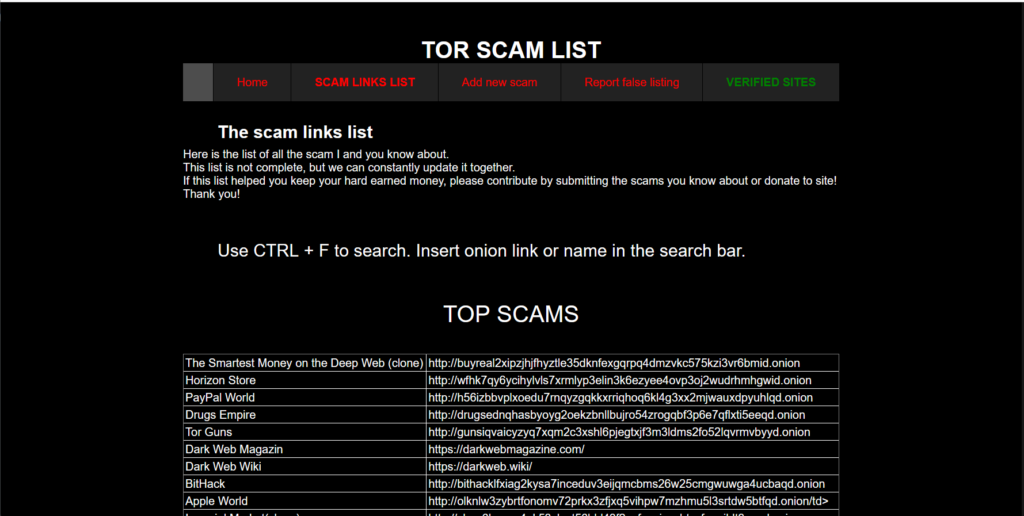Table of Contents
ToggleScam list of Tor – TOR Scam Report (1)
Onion Link: http://2dblwgkfsjws7eixfbvtg4albdjf62pulwazd4btvnxn5w63de7iuoad.onion/list
Scam Report Date: 2024/07/26
Client Scam Report Breakdown
Original Report Summary:
The client reports that “trusted” sites listed on a dark web scam directory may not be trustworthy, specifically highlighting concerns about the service known as “fasttransfer.” They assert that this site operates as a scam despite being classified as a legitimate and verified entity on the directory. This situation underscores the ongoing challenges faced by users attempting to navigate the murky waters of the dark web, where fraudulent entities can masquerade as credible services. The client’s assertion indicates a significant flaw in the scam directory’s verification process, raising questions about how sites are vetted and whether the claims of reliability are adequately supported.
Terminology and Dark Web Navigation
In the dark web ecosystem, terminology is crucial for understanding the various scams and the services involved. The term “trusted sites” refers to those that have been vetted by a directory or community and are purported to be legitimate sources for transactions. However, the client’s report on fasttransfer points to the risks associated with these listings. Services like fasttransfer are often advertised as quick and safe money transfer options, appealing to users who are in urgent need of such transactions. The term scam encompasses a wide range of fraudulent activities, including but not limited to those listed on the scam directory, such as Bitcoin scams, escrow scams, and credit card scams. Each category represents different methods by which users may be deceived, highlighting the diversity of scams in the dark web landscape.
Evaluating the Client’s Experience and the Broader Implications
The client’s assertion that “trusted sites are a scam” reflects a deeper issue concerning user trust in dark web marketplaces and their respective listings. The phrase “this list will grow with your help” from the scam directory’s announcement implies a community-driven approach to identifying and reporting scams, yet it raises concerns about the actual efficacy of such crowdsourced vetting. Without a rigorous and ongoing verification process, users may inadvertently rely on services that have already scammed others, as evidenced by the client’s negative experience with fasttransfer. This highlights the critical importance of user vigilance and the need for a robust community to report and update the status of various dark web services continuously. The client’s experience not only serves as a cautionary tale but also emphasizes the urgent need for more transparent and accountable practices within the dark web marketplace ecosystem.







